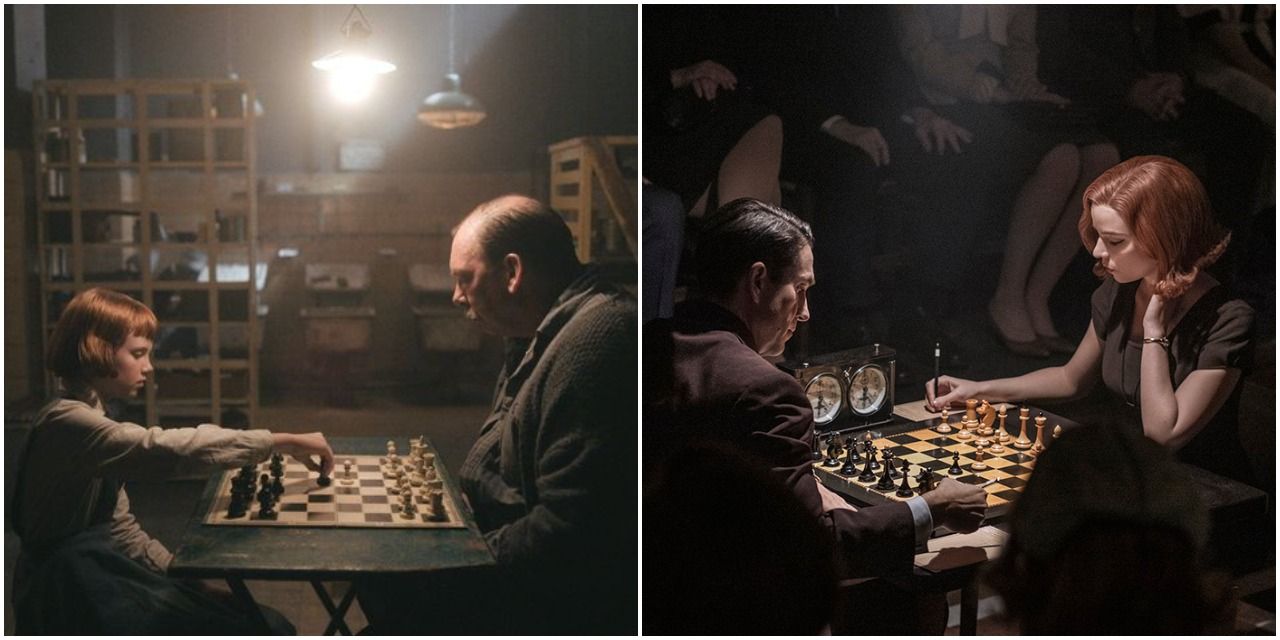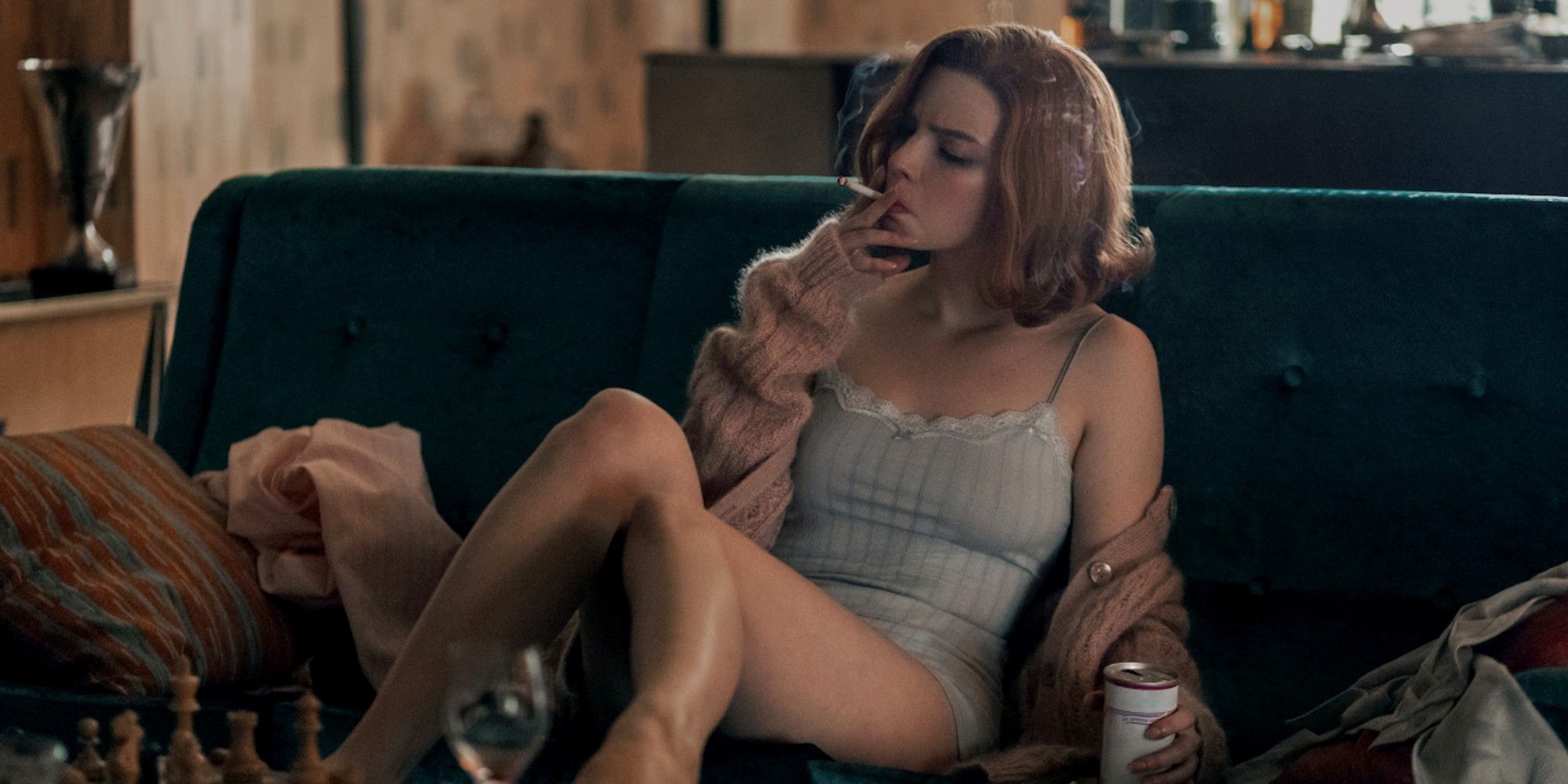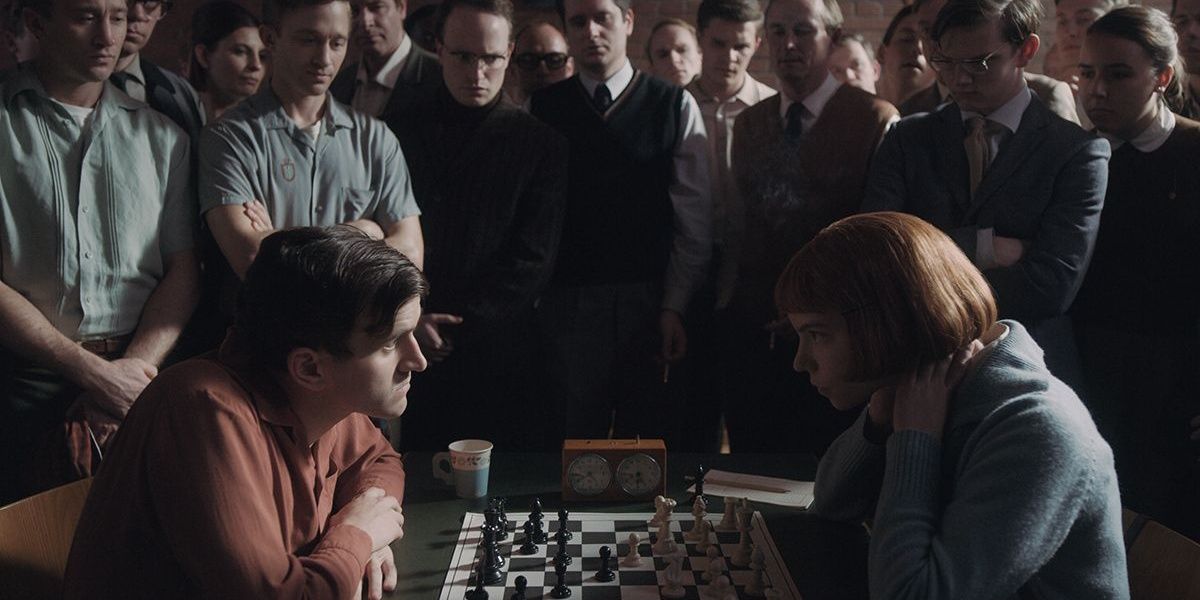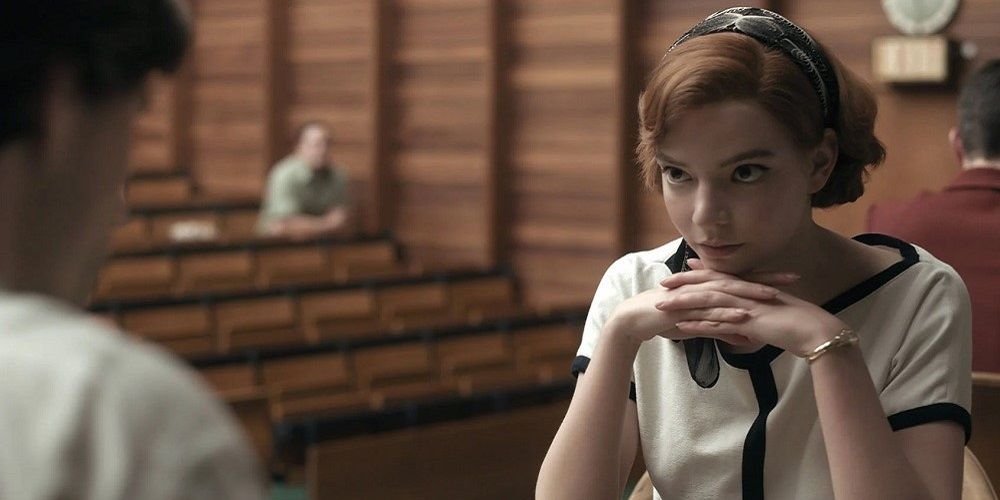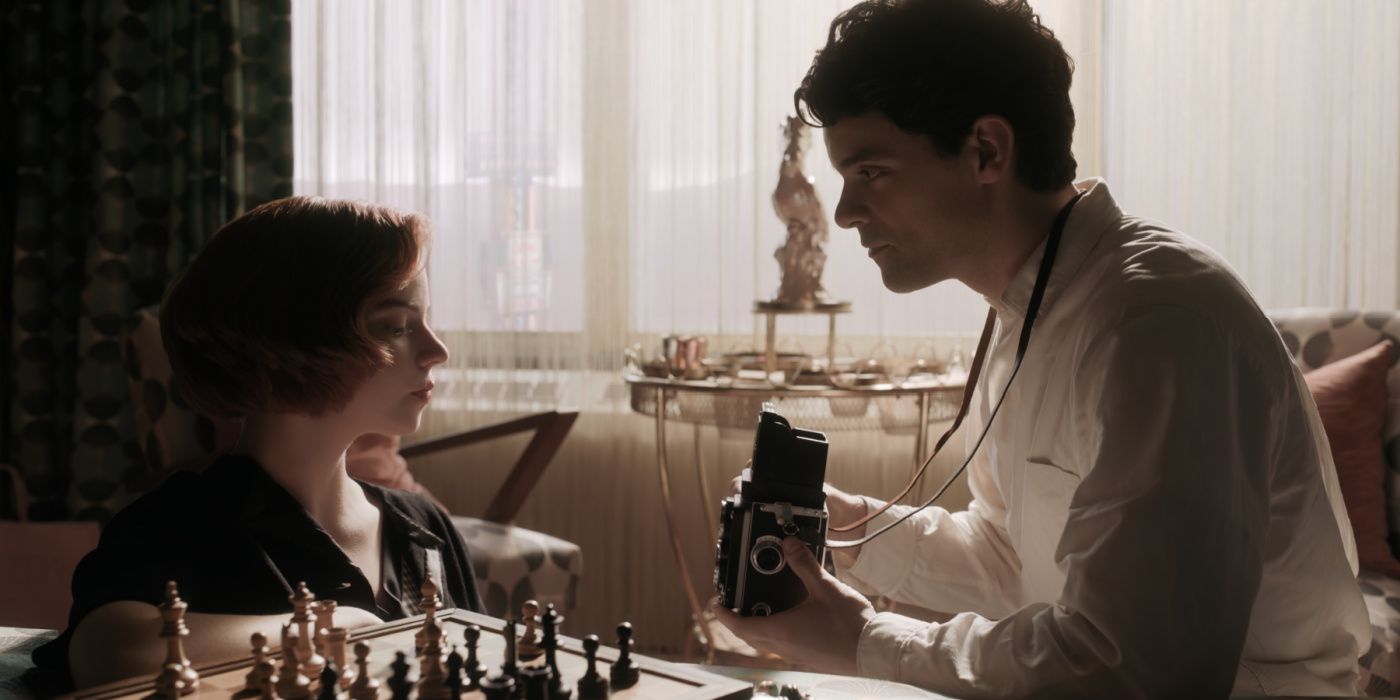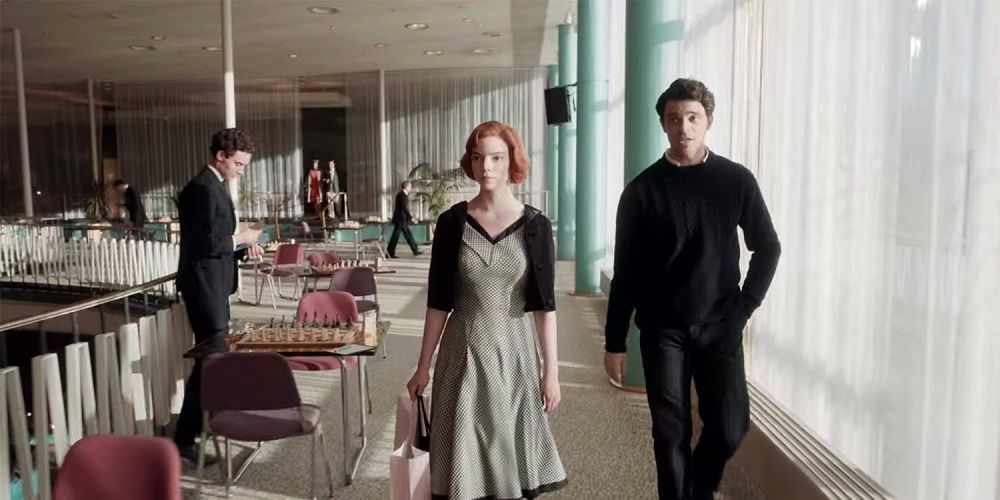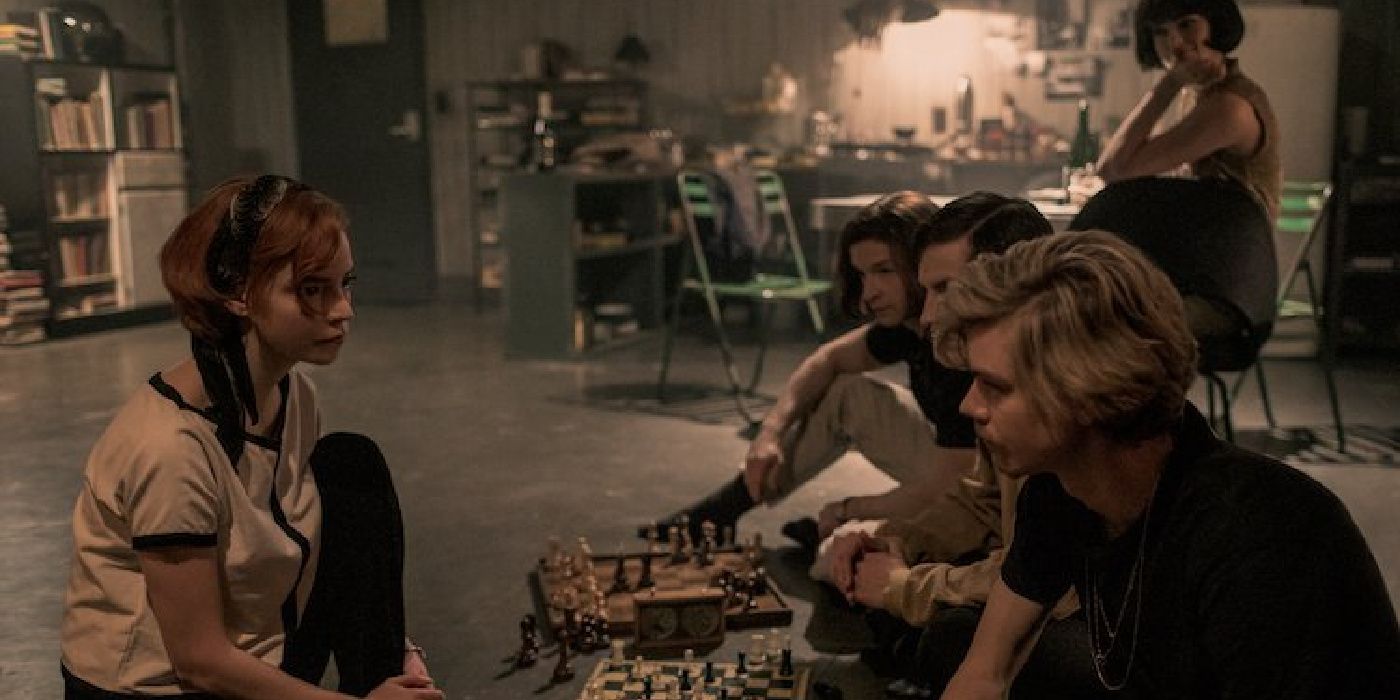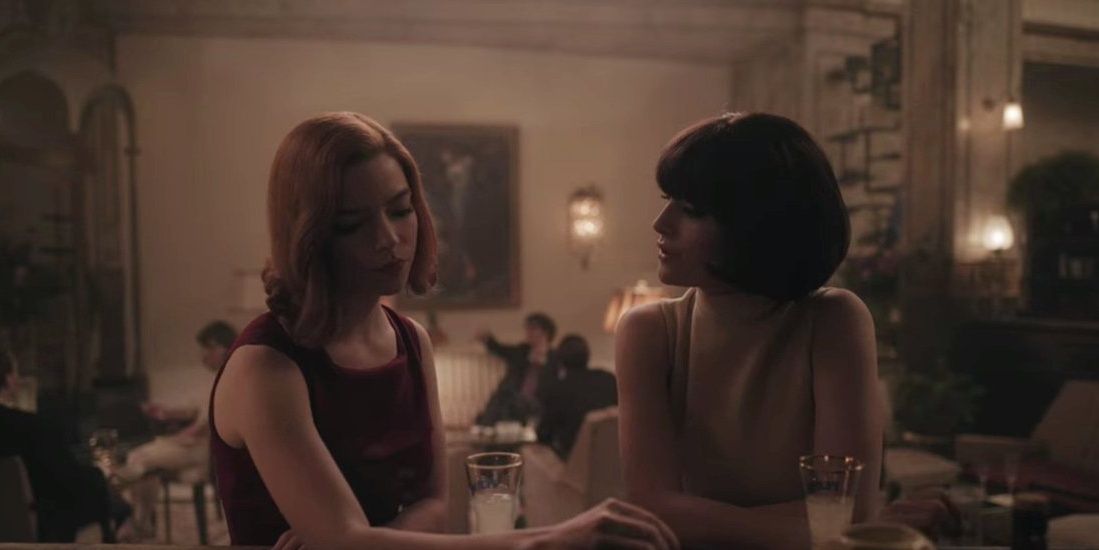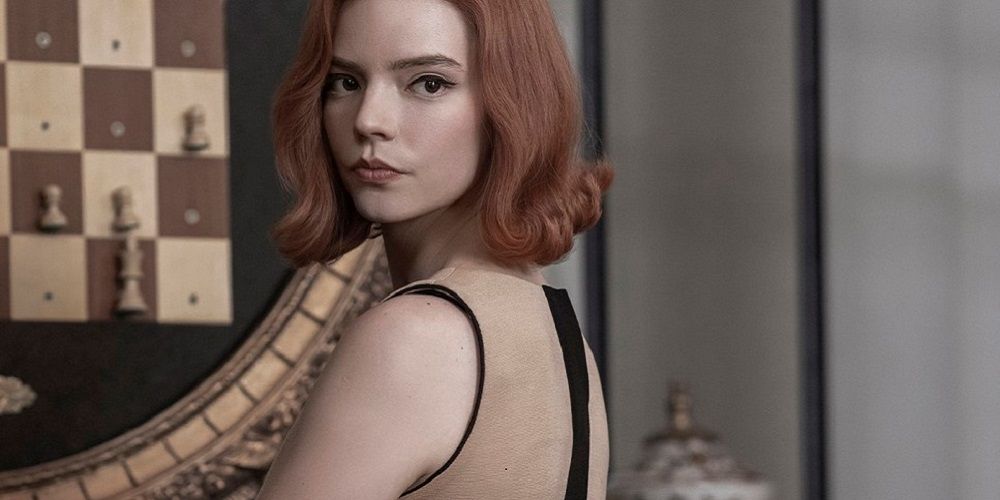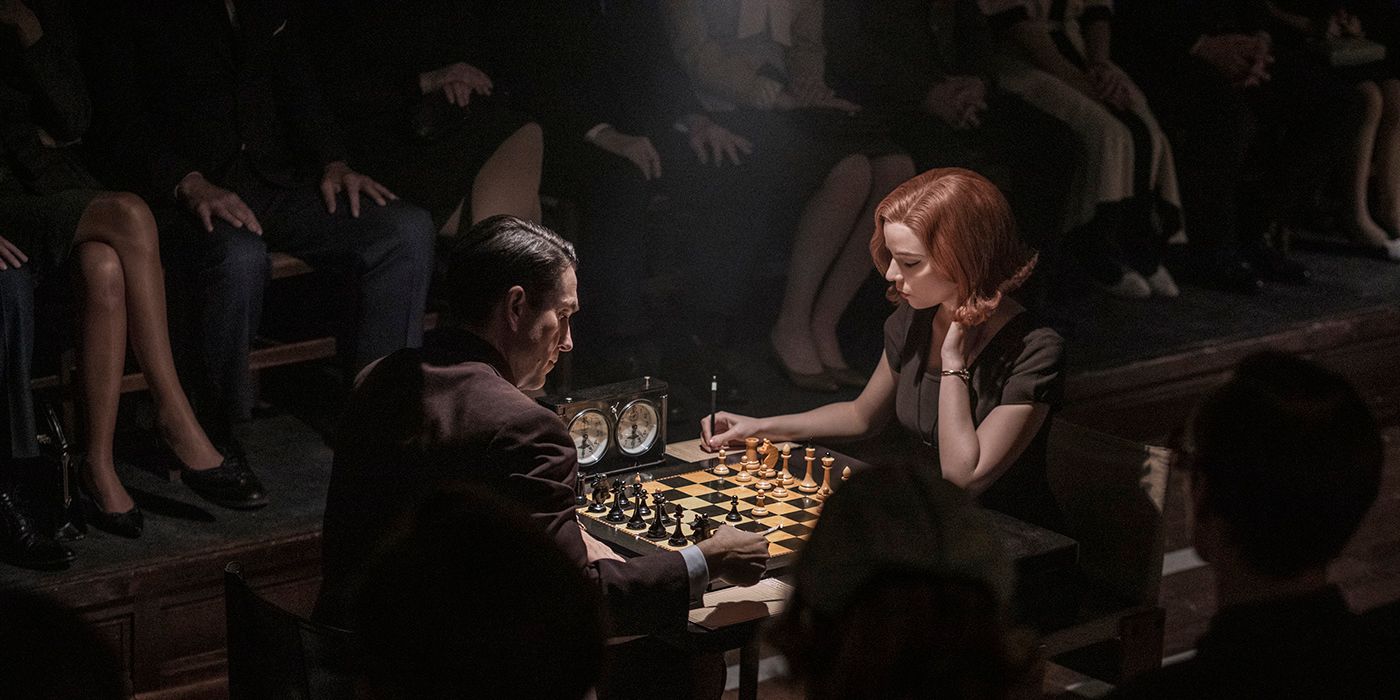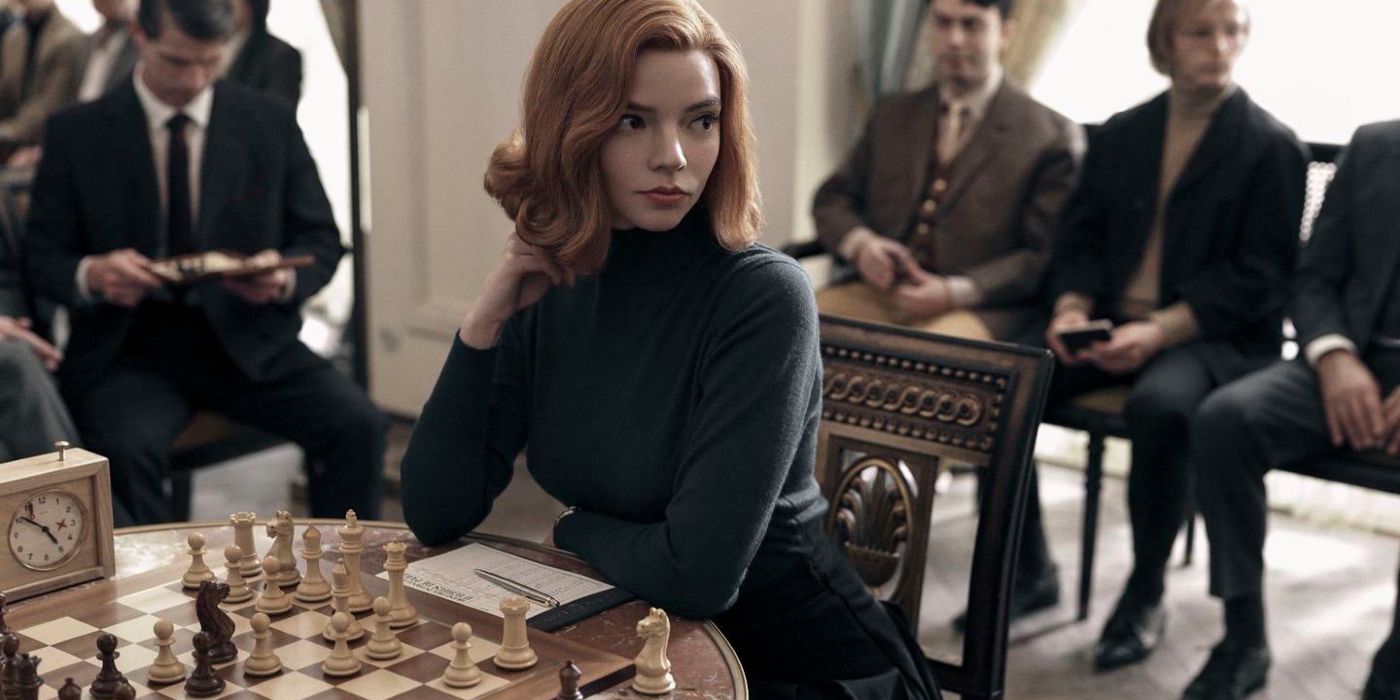Netflix's The Queen's Gambit, newly-crowned the streaming platform's most-watched scripted miniseries of all time, was in all regards an unexpected hit. It takes place in the world of chess, an area few shows prior have dared to venture.
Naturally, creator Scott Frank wanted the series' depiction of chess to be accurate, and thus he brought on Chess World Champion Garry Kasparov and renowned chess puzzle creator Bruce Pandolfini as consultants. The two composed hundreds of games for the series and even gave the actors tips on how to look like real players. But with all this focus on accuracy, how well does the series actually represent chess?
Right: Chess Obsession
Reviewing the show on their Twitch channel, chess masters and sisters Alexandra and Andrea Botez noted that The Queen's Gambit gave a very accurate depiction of chess obsession, something pros know about all too well.
The game takes over Beth's life as she struggles between "genius and madness", a path it could be argued that all chess players must take to achieve celebrated status. Chess World Champion Magnus Carlsen has even said he "sees himself" in Beth's obsession.
Wrong: Playing Too Fast
In an article for The New York Times, chess expert Dylan McClain says that the "most apparent" of the show's errors is how fast the players move.
Classical chess tournaments routinely give their players several hours to make all their moves, but the players in The Queen's Gambit moves at blitz-chess speeds. Obviously, this was to make the games seem more tense and exciting, but it's immediately noticeable to someone with tournament experience.
Right: The Chess World
The Queen's Gambit's portrayal of the chess world, no doubt influenced by Kasparov and Pandolfini's contributions, is stunningly accurate. From the books mentioned (Modern Chess Openings is indeed real) to the famous players, such as World Champions Mikhail Botvinnik and Alexander Alekhine, that are casually name-dropped, it's clear that the series wanted to be as true as possible to its setting.
This is something chess players who went to watch the series definitely noticed. As chess photographer David Llada said in a statement: "The chess community fell in love with the series because it successfully portrays different aspects of chess in all its richness."
Wrong: No Draws
Chess National Master Sam Copeland spotted what may be one of the series' most infuriating errors to experienced players: the series never shows any drawn (tied) games.
While ties certainly aren't as exciting as decisive games, at her level Beth Harmon would definitely split the point much more often than the series implies.
Right: The Tournaments
The tournaments shown throughout The Queen's Gambit are surprisingly all parallels to real tournaments, at least to some extent; on the extreme side, the U.S. Open was indeed held in Las Vegas in 1966, as depicted in the series (in real life, it was won by Grandmaster Pal Benko).
More importantly, as chess aficionado Karen Schmidt wrote in the Seattle Times, the series flawlessly retains the "atmosphere and mystique" of the chess tournament.
Wrong: Talking During The Games
As reported by CNET, The Queen's Gambit features multiple moments where players talk to each other during tournament chess games.
In tournament play, opponents traditionally only talk to each other before and after the game — doing otherwise is almost always against the rules.
Right: Portrayal Of A Chess Player
Anya Taylor-Joy said in an interview with The Guardian that "it was important for [her] to honor the chess community" with her performance, and many fans agree that she really does fit the role of a chess master.
Prominent chess news site Chessbase reserved special praise for her in their review, calling her performance a "tour de force" that will "do wonders for her career."
Wrong: Ratings Mix-Up
Another mistake caught by Copeland is the ratings mix-up that seems to occur early on in the series. Beth says a little while after winning the Kentucky State Championship that she's just reached an 1800 ELO rating, despite having beaten several players far above that threshold (including a grandmaster, whose rating would probably be around 2500).
Copeland estimates that even if she suffered a few hard losses that weren't shown in the series, her rating would still be around 2300-2400 initially.
Right: The Games
While it's true that most movies and TV shows about chess do at least try to make sure the games look real, The Queen's Gambit definitely went the extra mile in this respect with the hiring of Kasparov and Pandolfini as consultants.
This led to an extreme level of chess accuracy in the games shown; as creator Scott Frank said in an interview with EW, “You can freeze-frame anything, and it's a real chess setup. There's even a whole sequence where you never see the board, but they're still actually moving the pieces where they're supposed to. The actors always knew exactly where every piece was supposed to go.”
Wrong: Substance Abuse Wouldn't Improve Beth's Play
The biggest chess mistake in The Queen's Gambit is one that doesn't directly relate to the moves on the board or the position of the pieces, but rather the dramatic license taken first by Walter Tevis in the original novel and later by Scott Frank in his adaptation: both presented the idea that Beth's drug use was what made her such a strong player.
In an interview with Vanity Fair, two-time U.S. women's champion Jennifer Shahade noted that substances might be used by chess players to "relieve stress or anxiety", but "not to actually improve their play." McClain likewise notes that drugs "would have only diminished, not improved, [Beth's] play." Even non-chess players are taking issue with the portrayal: in an article for Harper's Bazaar, columnist Lilly Dancyger claimed that the show "[spread] a dangerous and flawed representation of the link between drugs and genius" and though it revealed at the end that drugs weren't really what made Beth so good at chess, "it felt like too little too late after a full season of giving credence to a dangerous fallacy."

